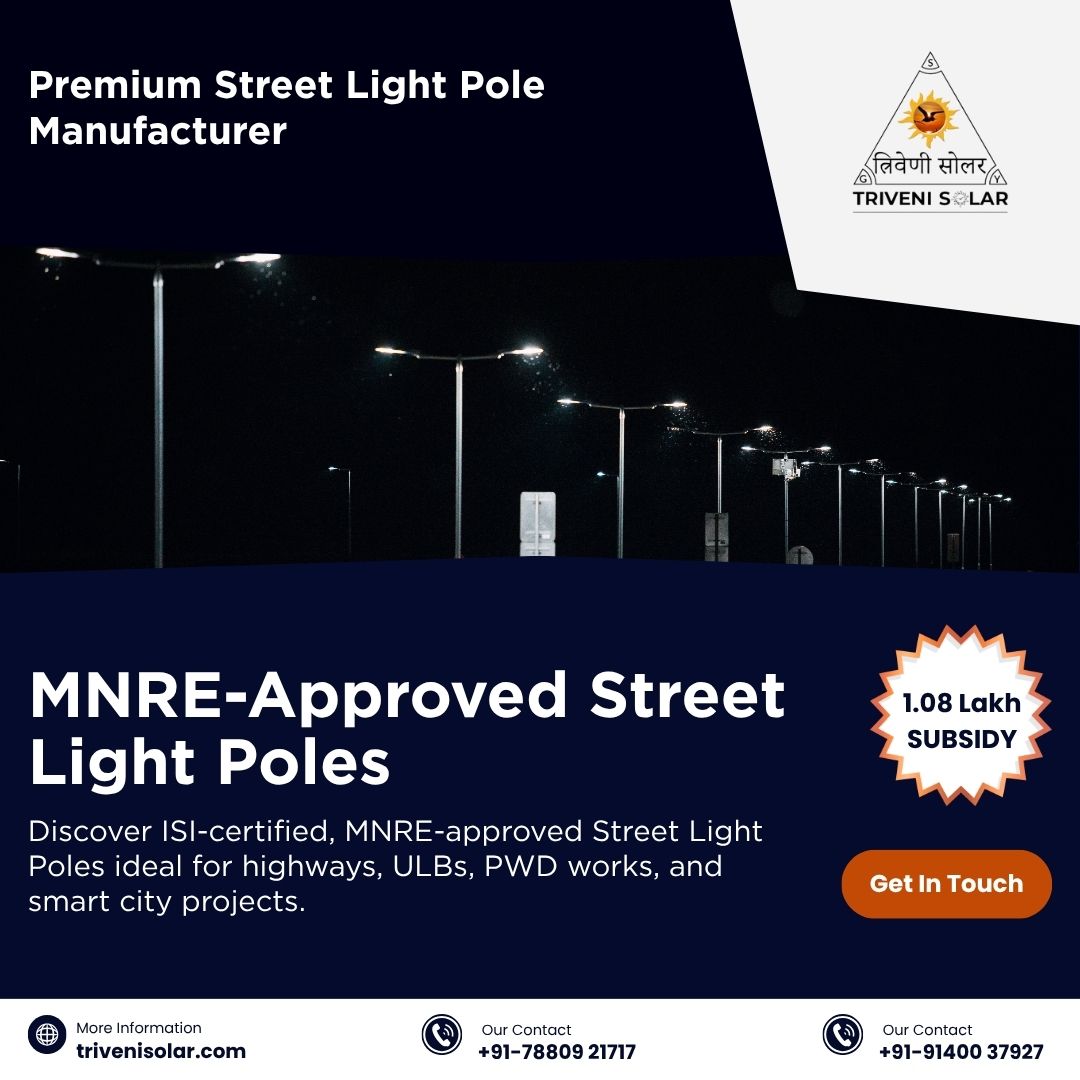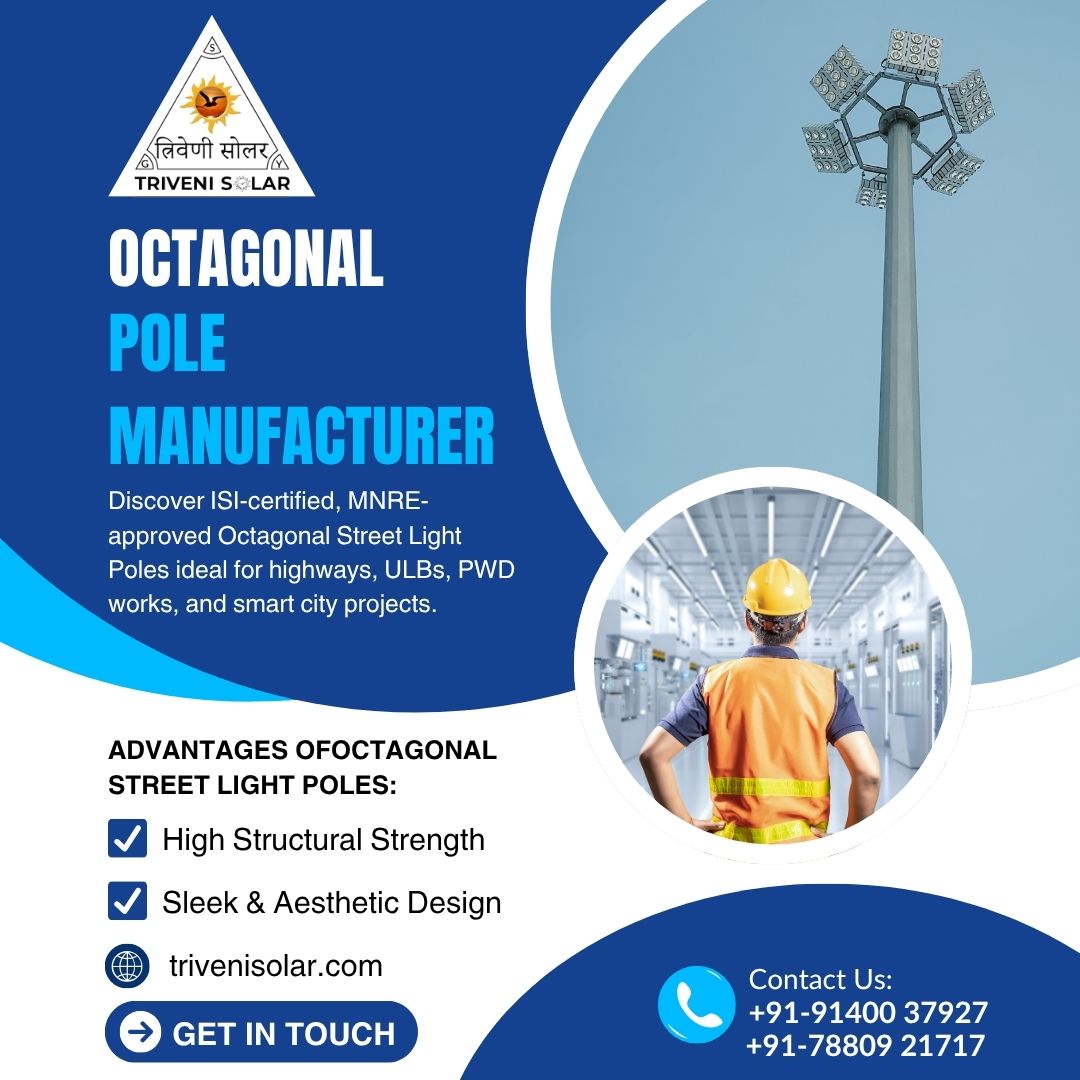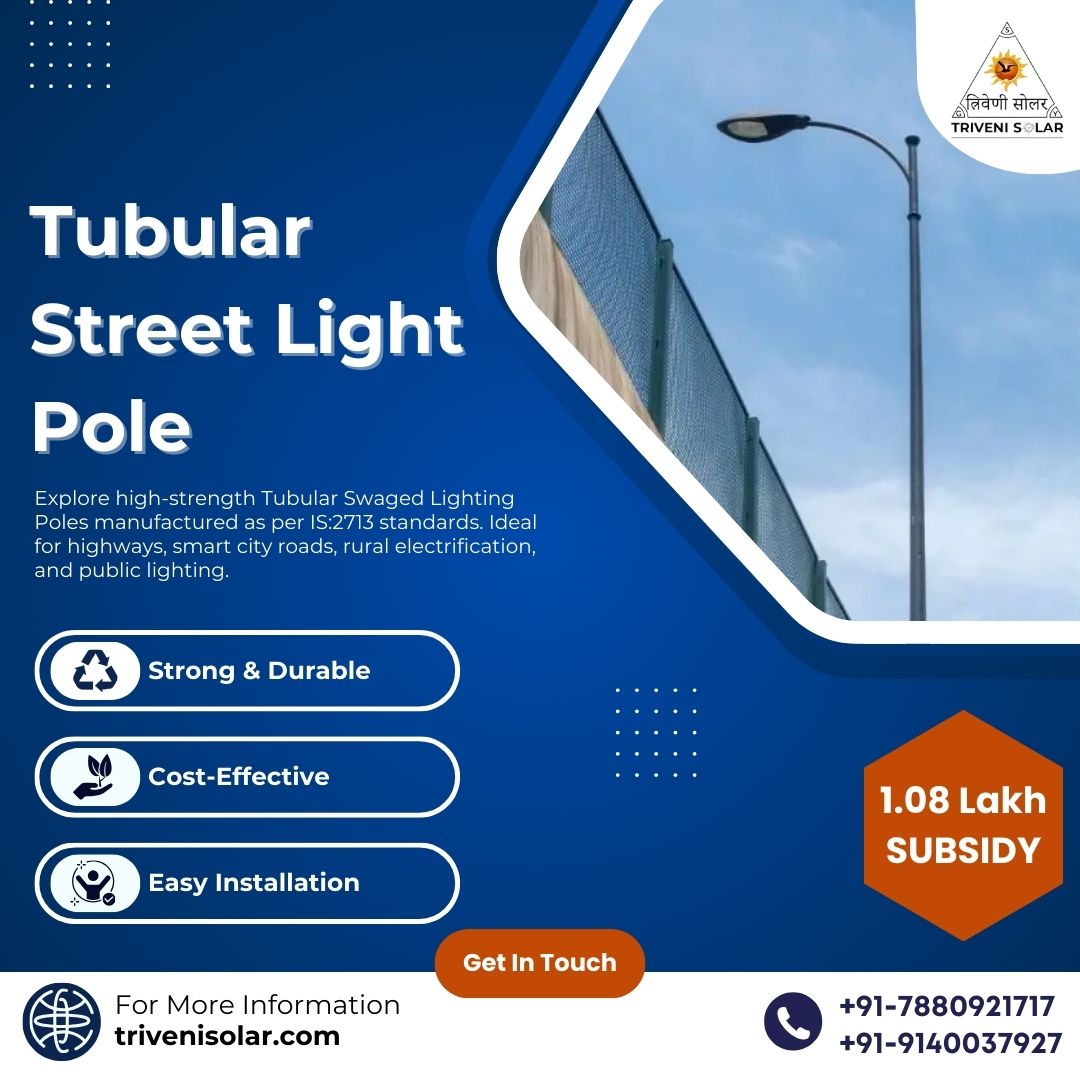If you’re planning a street-lighting project in India—whether it’s a city road, an industrial park, or a smart-city spine—you’ll almost certainly evaluate tubular street light pole. These are the classic, round-section steel poles you see everywhere, typically 7 m to 16 m tall, designed to the Indian IS 2713 standard, and hot-dip galvanized for long life. They’re strong, familiar to contractors, cost-efficient, and easy to source—making them a reliable default for most corridors.
What Is a Swaged Tubular Street Light Pole?
“Swaged” describes how the pole is formed from two or three tube sections of diminishing diameter, joined to create a tapered circular profile. IS 2713 defines both stepped and swaged types and two tensile grades: 410 MPa and 540 MPa. In practice, swaged poles dominate street lighting because they’re simpler to install (often direct-buried) and cover common mounting heights (7–16 m) at attractive costs.
IS 2713 at a Glance
- Parts 1–3 cover general requirements plus specifics for 410 MPa and 540 MPa steels.
- The standard provides dimensional tables, breaking load data, and testing—like deflection and drop tests—to validate structural performance.
Typical Heights & Use Cases
- 7–9 m: residential streets, internal roads, campuses.
- 10–12 m: arterial roads, industrial estates.
- 14–16 m: wider medians, high-mast alternatives for large areas (subject to wind/load).
Indian manufacturers commonly quote 5–16 m availability; 7, 9, 10, and 12 m are the most specified.
Tubular Street Light Pole Key Standards & Coatings You Should Care About
IS 2713 (Parts 1–3): Dimensions, Loads, Tests
IS 2713 sets the language of tubular poles in India. You’ll see designations like 410 SP-1 up to 410 SP-80, or 540 SP-1 up to 540 SP-80—each mapping to outside diameters (OD), thickness, length of sections, nominal weight, and expected breaking load. Engineers also rely on deflection and permanent-set limits to check stiffness and serviceability.
Hot-Dip Galvanizing (IS 4759 / ISO 1461): Why It Matters
Galvanizing (zinc coating) is what makes poles stand up to India’s heat, humidity, and pollution. National guidance is in IS 4759; many manufacturers also align with ISO 1461. On real projects you’ll see typical coating thicknesses in the ~65–86 μm range (or equivalent mass) quoted as good practice for urban exposure. Always ask for MTCs and coating test reports.
Tubular vs. Octagonal Poles—Which Should You Choose?
Both serve street lighting well, but they differ:
- Tubular (Swaged)
- Foundation: Often direct-embedded in a PCC pit; no base plate.
- Look: Classic round silhouette.
- Cost/Lead Time: Usually more economical for mainstream heights; widely stocked.
- Best for: Standard streets, industrial campuses, quick-turn projects.
- Octagonal (Polygonal)
- Foundation: Baseplate with anchor bolts, template, and grouted foundation.
- Look: Sleek, modern facets (popular for boulevards).
- Cost/Lead Time: Slightly higher; more fabrication steps; often used when accessories (banners, CCTV) need mounting holes.
- Best for: Premium urban corridors, design-led streetscapes, when bolt-down maintenance is preferred.
Quick Spec Snippets
IS 2713 includes many designations. Here’s how to read them:
- “410 SP-x” → steel with 410 MPa min tensile strength, Swaged Pole, designation x.
- As the number (x) increases, OD/thickness combos and pole weight change, influencing breaking load and deflection performance.
- Common project call-outs: 7 m, 9 m, 10 m, and 12 m poles mapped to appropriate 410/540 series depending on wind and outreach.
For precise values (ODs, thicknesses, nominal weights, and loads), consult the IS 2713 tables or manufacturer dimension sheets.


How to Size Your Tubular Street Light Pole
- Define Mounting Height
Start from the lighting design (lux levels, spacing). Typical streets use 7–12 m mounting heights. - Check Local Wind Zone & Terrain Category
Higher wind → stronger designation (or shorter outreach). Engineers translate wind to transverse load for the pole. - Account for Outreach Arm & Luminaire Mass (EPA)
Longer arms and heavier luminaires increase moment. Verify arm length (e.g., 1.0–1.5 m) and luminaire projected area. - Pick the IS 2713 Designation
Choose a 410 SP or 540 SP number that meets breaking load and deflection/permanent-set criteria. (540 MPa grades are stiffer/stronger for the same geometry.) - Choose the Finish & QA
Specify hot-dip galvanizing to IS 4759 / ISO 1461, target ~65–86 μm coating, earthing hole location, and test certificates (drop, deflection).
Tubular Street Light Pole QA & Site-Inspection Checklist
- Material & Make: Confirm mill certificates and steel grade (410/540).
- Dimensions: Measure section ODs/thickness vs. the designated IS 2713 table.
- Galvanizing: Coating thickness checks (mag gauge), visual continuity, no bare spots, drain/vent holes OK.
- Earthing: Hole typically provided (e.g., ~14 mm at ~300 mm from the base—verify per tender).
- Tests: Look for deflection and drop test compliance in QA docs.
- Installation: Plumbness, embedment depth, PCC backfill, compaction, arm orientation.
Tubular Street Light Pole Applications & Indian Context
Swaged tubular poles are deployed across municipal roads, industrial corridors, campuses, telecom aerial cabling, signage, traffic signals, and even solar street lighting. Their popularity stems from availability across 5–16 m, in-country fabrication capacity, and established galvanizing infrastructure.
Why Choose Triveni Solar for Tubular Street Light Pole
Triveni Solar focuses on reliable, standards-compliant lighting infrastructure with practical project support:
- Standards-Driven: Designs aligned to IS 2713 with documentation support.
- Coating Assurance: Hot-dip galvanizing partners aligned to IS 4759 / ISO 1461 practices with thickness reporting.
- Engineered Accessories: Arms (single/double), outreach options, bracketry, and cable entry.
- Project-Ready: Coordinated deliveries, BOQ support, and on-site inspection checklists.
- After-Sales: Replacement arms, add-on brackets, and maintenance guidance.
Downloadables
- Standard Tender Text for 9 m swaged tubular pole (IS 2713).
- Inspection Checklist (galvanizing & dimensions).
- Editable BOQ with alternates (410 vs 540 series).
FAQs
Q. What does “410 SP-xx” mean?
A. 410 = steel tensile strength grade; SP = swaged pole; xx identifies the exact OD/thickness combo per IS 2713 tables.
Q. Tubular vs. octagonal—how do I choose?
A. For direct-buried, value-engineered roads, tubular swaged poles are the default. For bolt-down foundations, premium looks, or heavy accessories, octagonal works well.
Q. What galvanizing thickness should I ask for?
A. Reference IS 4759; many buyers target about 65–86 μm for urban conditions and ask for coating test reports.
Q. What are common heights?
A. 7–12 m are most typical; 14–16 m in special contexts. Check wind, outreach, and luminaire mass before freezing.
Q. Can poles support CCTV or signage?
A. Yes—confirm additional loads/arms during design; octagonal poles make mounting easier, but tubular can be configured too




